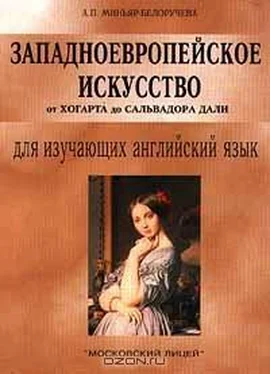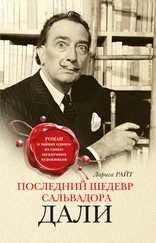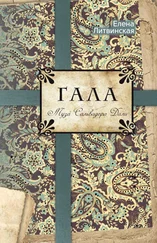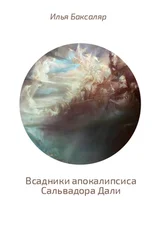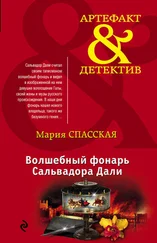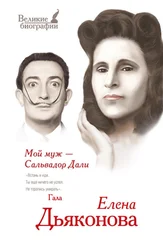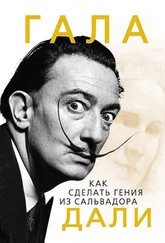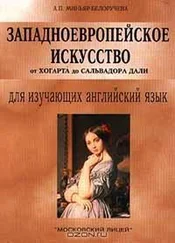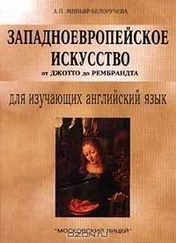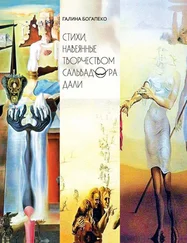VI. Summarize the text.
VII. Topics for discussion.
1. Matisse's artistic philosophy.
2. Matisse's mature works of art.
Unit XVIII Picasso (1881-1973)
The long career of Pablo Ruiz у Picasso cast across the twentieth century a shadow as long as those of Michelangelo and Titian across the sixteenth century. Picasso created one of the most important movements of the twentieth century, participated in many others, and influenced every phase of artistic activity throughout the world in one way or another until his extreme old age. Throughout his entire life he showed an incredible range of ideas and styles, and even in later years he remained a towering figure. The best works among his immense output have taken their place among the masterpieces of twentieth-century art.
A fully trained painter at the age of nineteen, the Spanish-born Picasso took up residence in France in 1900. He fell under the influence of Toulouse-Lautrec. Picasso became concerned with the lives of those who lived as he did on the periphery of society. The woman in his Absinthe Drinker , of 1902, is enveloped in self-pity and helplessness, a figure of extraordinary sculptural simplicity and beauty. The painting is coloured by blue – the proverbial colour of melancholy – which has given its name to this period in Picasso's evolution, lasting about four years (1901-4). For the young painter it was a period of hopeless maladjustment to the art world of Paris.
By late 1904 Picasso's mood of depression had lightened, and so also had his palette. A brief Rose Period (1904-6) followed, in which he was less concerned with the tragic aspects of poverty than with the nostalgic charm of circus performers. Salimbanques , of 1905, shows a family of these strolling players grouped together physically, but emotionally detached, before a mysterious desert landscape. Figures and costumes, surely drawn and modelled blend with the ground and the sunny haze in tones of softly greyed blue, rose and beige, creating mother-of-pearl effects. This is one of the loveliest pictures of the 20-th century.
Les Demoiselles d'Avignon , of 1907, heralds the beginning of Cubism. The attitude and methods of the Cubists are not easy to explain. Cezanne had founded planes in real objects and had used them to establish a structure of form seen by means of colour; the Cubists do the opposite, imposing their own structure of mono-chromic planes upon the object. The composition of Les Demoiselles d'Avignon was derived from a small bather composition by Cezanne. The intensity of the partially decomposed figures contrasts with a still life in the foreground. Instead of Cezanne's lovely roses, blues and greens, the figures are largely light brown, their anatomy is indicated by uneven white or black contours. A harsh blue, as if a sudden glimpse of sky, surrounds the figure at the upper right. The staring expressions of the central figures give way at all sides to simplified, influenced by African sculpture, faces.
Heads, busts, still life and occasional landscapes form the subject matter of early Cubist painting. In the Seated Woman , of 1909, the individual forms – the characteristic swelling and distortion of the neck muscles, or the reduction of the eyes to trapezoids – are not derived from nature. Soft tans and olive tones prevail.
By 1911, in the phase known to art historians as Analytical Cubism, the tension has burst, and so has the object. The entire foreground is filled with its component planes, floating as if in a thick mist. The planes are no longer opaque; one seems to see through them, and a great deal of the effect of an Analytical Cubist picture is derived from the delicacy of the intersection of these planes. They are rendered with a divided touch recalling that of Impressionism. These planes build up a pyramidal structure, superseding the structure of observed reality.
Cubism rapidly became a common style. During 1912 the Cubist artists began to turn to a new series of interests and a new kind of experience, responsible for the phase known generally as Synthetic Cubism, since the painters no longer sought to disintegrate the object but to reassert it. In Synthetic Cubism the barrier between reality and representation is unexpectedly broken. Now bits of the real objects make their entrance into the picture: newspaper clippings, lengths of rope, etc. Picasso's The Bottle of Suze , of 1913, is an epitome to this Synthetic phase. Once established, the Cubist mode of vision and construction continued vital for many years. Every abstract current in abstract art during the period from the 1920s to the present owes a debt to Cubism. For the rest of his life Picasso continued to make use of Cubist forms and ideas.
During the years immediately after World War I, it is not possible to talk of «periods» in Picasso's work; two sharply different styles, superficially opposed, but in reality strongly related to each other, exist side by side. The gorgeous Three Musicians , of 1921, is a Synthetic Cubist picture in that the planes are, now locked into a total design, governed by the recognisable image. The three musicians are undoubtedly a Pierrot, a Harlequin and a Franciscan monk. The planes into which they have been divided proceed according to their own laws and not those of natural appearances. The colouring is as brilliant as that of any Fauve painting. Its hard clear tones together with the astonishing size create a splendid decorative effect.
In 1917 Picasso visited Italy. He was greatly impressed by the grandeur of the Italian past, especially Roman sculpture and the mural paintings of Giotto. Quite unexpectedly Picasso developed a monumental and largely monochromatic Classical style with complete figures heavily modelled as if they were statues. He experimented with every aspect of Classical style, but his most imposing Classical creations are the majestic compositions involving seated giantesses seeming to derive from a legendary past. In Three Women at the Spring , of 1921, Picasso has made the figures graceless, emphasising the bulk and weight of their hands and feet, and intensifying the impersonality of their stony faces. For several years this Classical style coexisted in Picasso's production with late Cubism.
Picasso's post-Cubist works are characterised by the lightning changes of styles. Sometimes incompatible styles appear side by side in the same painting. During the 1930s Picasso took an active part in the Surrealist movement. His best work of this decade, and the greatest of all social protest pictures is Guernica . Picasso executed this enormous painting to fulfil a commission for the pavilion of the Spanish republican government at the Paris Exposition of 1937, while the civil war was still going in Spain. Intended as a protest against the destruction of the little Basque town of Guernica in April 1937, by the Nazi bombers in the service of the Spanish Fascists, the picture has become in retrospect a memorial to all crimes against humanity in the twentieth century. As he worked, Picasso combined images drawn from Christian iconography with motives from Spanish folk culture, especially the bullfight, and from his own past. Actual destruction is reduced to fragmentary glimpses of walls and tiled roofs, and flames shooting from a burning house at the right. A bereft mother rushes screaming from the building, her arms thrown wide. Agonised heads and arms emerge from the wreckage. At the left a mother holding her dead child looks upward, shrieking. The merciless bull above her, is surely related to the dread Minotaur, adopted by the Surrealists, as an embodiment of the irrational in man. If the bull signifies the forces of Fascism, the dying horse suggests the torment of the Spanish people, and the oil lamp held above is the resistance of humanity against the mechanised eye, whose iris is a electric bulb. The spiritual message of combined terror and resistance is borne, unexpectedly, by the Cubist aesthetic means. An explosion of shattered planes of black, white, and grey reshapes itself as one watches into a giant pyramid, as if triumphant even in the destruction.
Читать дальше
